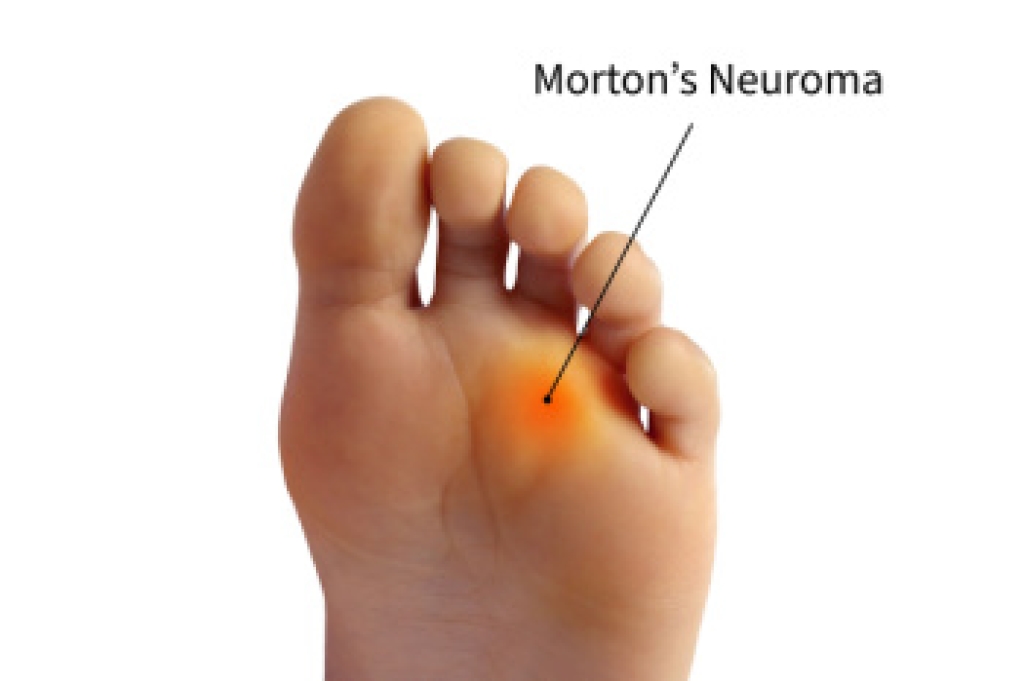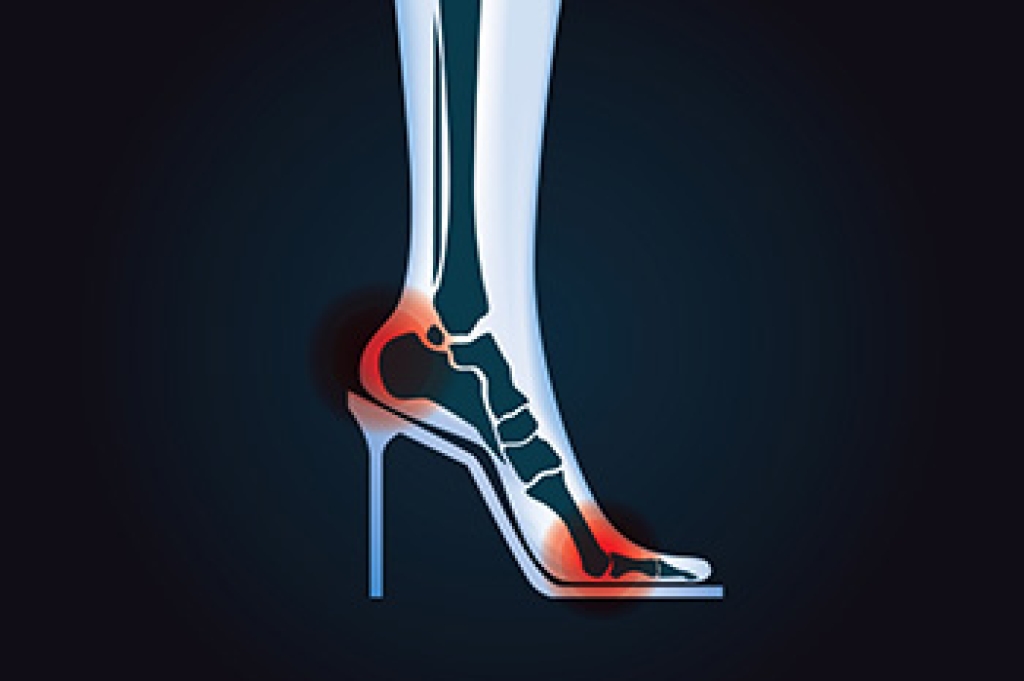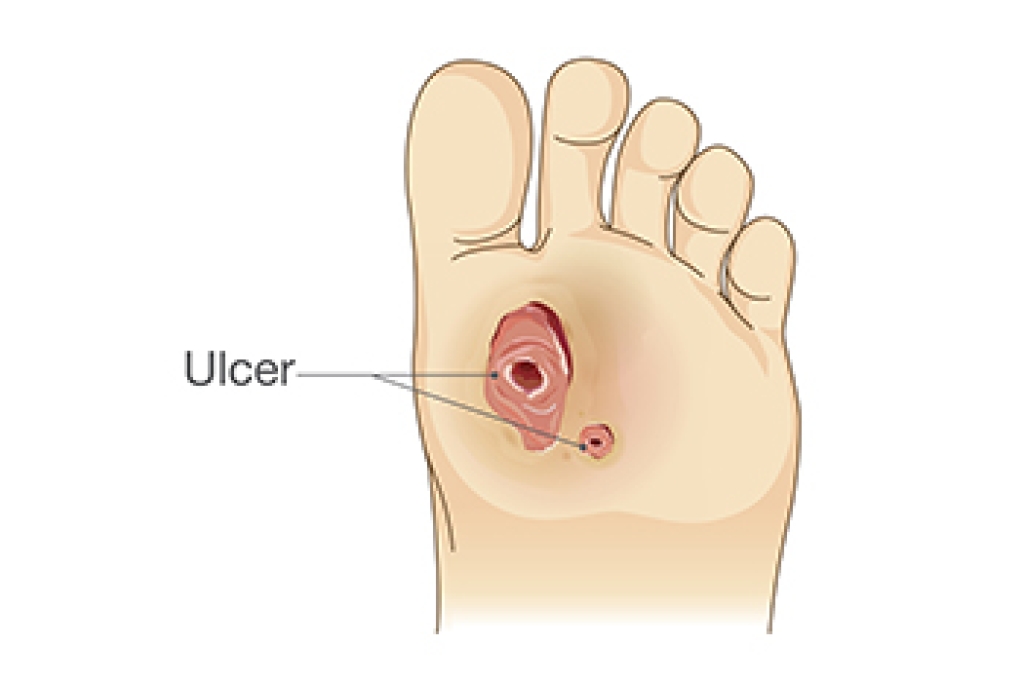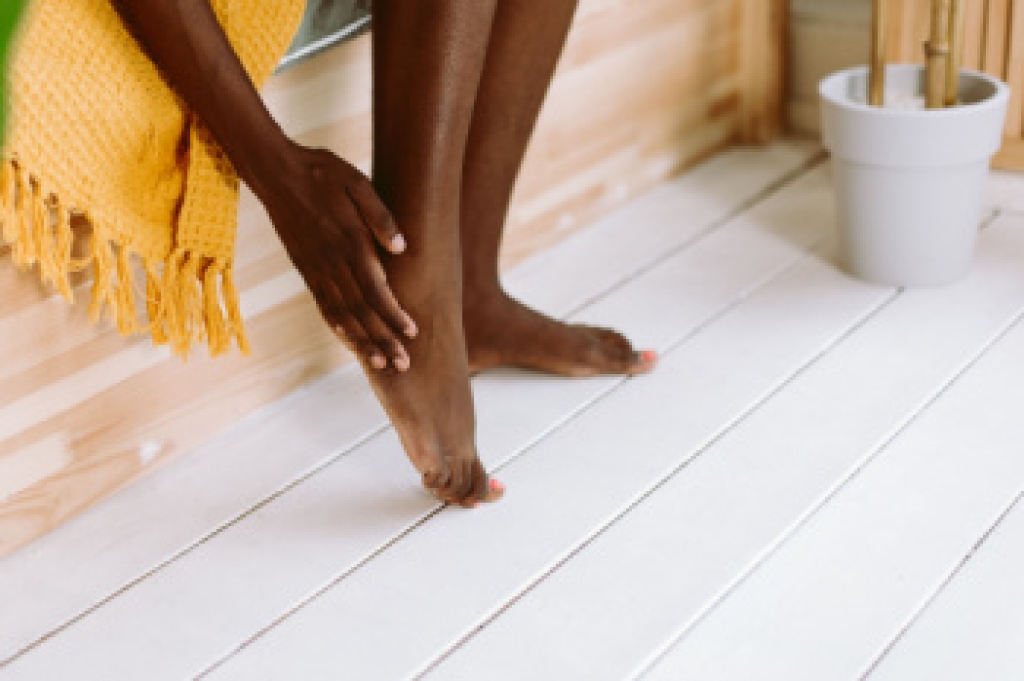
Morton’s neuroma is a painful condition that affects the ball of the foot, typically between the third and fourth toes. It occurs when the tissue surrounding the nerve becomes thickened, often due to irritation or pressure. The symptoms include a sharp, burning pain, a sensation of something being stuck in your shoe, or numbness in the toes. The pain usually worsens with activity or wearing tight shoes, particularly high heels. The primary causes of Morton’s neuroma are repetitive pressure on the feet, such as from tight shoes or high heels, flat feet, or abnormal foot mechanics. A podiatrist can help diagnose Morton’s neuroma through a physical examination and imaging tests. Treatment options include footwear changes, padding, custom orthotics to reduce pressure, and anti-inflammatory medication. In some cases, injections or surgical removal of the affected tissue may be necessary. If you have any of the above symptoms, it is suggested that you schedule an appointment with a podiatrist for proper diagnosis and appropriate care.
Morton’s neuroma is a very uncomfortable condition to live with. If you think you have Morton’s neuroma, contact Kent DiNucci, DPM of Ankle and Foot Clinic . Our doctor will attend to all of your foot care needs and answer any of your related questions.
Morton’s Neuroma
Morton's neuroma is a painful foot condition that commonly affects the areas between the second and third or third and fourth toe, although other areas of the foot are also susceptible. Morton’s neuroma is caused by an inflamed nerve in the foot that is being squeezed and aggravated by surrounding bones.
What Increases the Chances of Having Morton’s Neuroma?
- Ill-fitting high heels or shoes that add pressure to the toe or foot
- Jogging, running or any sport that involves constant impact to the foot
- Flat feet, bunions, and any other foot deformities
Morton’s neuroma is a very treatable condition. Orthotics and shoe inserts can often be used to alleviate the pain on the forefront of the feet. In more severe cases, corticosteroids can also be prescribed. In order to figure out the best treatment for your neuroma, it’s recommended to seek the care of a podiatrist who can diagnose your condition and provide different treatment options.
If you have any questions, please feel free to contact our office located in Omaha, NE . We offer the newest diagnostic and treatment technologies for all your foot care needs.




